10 Best Noir Films that are a must-watch
Noir films emerged as a new style of cinema in Hollywood during the late 1940s and early 1950s. They initially responded to post-war disillusionment by depicting the cynical atmosphere of a society struggling for reconstruction.
Experimentation was the driving force in the direction of great films of Billy Wilder, Fritz Lang, and many more who painted a dire picture of the American Dream that was full of deceit and despair.
Noir films were enclosed by a dark and heavy atmospheric mood, presenting the characters in expressive chiaroscuro pictures, reflecting the films' ethical complexity. The cinematography was also quite experimental, such as employing the use of Dutch angles and deep focus. Locations varied from dark alleys of foggy urban areas to the seedy places of nightclubs and speakeasies.
With themes of betrayal, moral ambiguity, and existential dread in the postmodern setting, Noir films majorly represented the undercurrent of distrust and anxiety prevalent in a repressive society. Consisting mostly of crime dramas, here is a list of ten Noir films that have left a lasting impact on Hollywood.
Demons from hell invading our world? Check out Netflix's new show HERE.
Note: This list is subjective and reflects the author's opinion.
Double Indemnity, Sunset Boulevard, and more — 10 best Noir films to watch
1) The Maltese Falcon (1941)
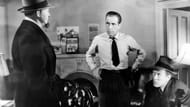
In the film The Maltese Falcon, Humphrey Bogart plays private detective Sam Spade, who wades through an intricate series of betrayals and killings to recover a valuable artifact. When his partner is murdered, he becomes entangled with a trio of characters: the seductive Brigid O'Shaughnessy, the decadent Joel Cairo, and the burly Kasper Gutman.
These characters have their own secret motives connected to the Falcon – an ornament with a sinister past. The Maltese Falcon, adapted from a novel of the same name, perfectly epitomizes the elements of efficient dialogue, complicated characters, and suspenseful atmosphere that is representative of Noir films.
Besides proving why Bogart was considered such a bonafide star at the time, the movie also effectively lays down the blueprint to represent the dark and gritty ambiance endemic to Noir films. Thus, fans should definitely not miss this gem.
2) Double Indemnity (1944)
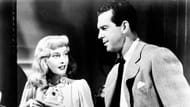
Double Indemnity, directed by Billy Wilder, throws its viewers headfirst into a story that explores a sinister tale of greed and betrayal. Walter Neff, an insurance salesman, becomes infatuated with the manipulative Phyllis Dietrichson. Phyllis convinces Walter to kill her husband for insurance money to help her family pay their debts.
Adapted from a novella written by James M. Cain, the storyline revolves around a double indemnity clause that offers a hefty insurance sum if Phyllis' husband dies in a unique accident. However, things start to unravel as trust falters and suspicions arise. As tension grows, Walter maintains the guise of calm calculation while things slowly move to a tragic end.
Fans should watch Double Indemnity for its brilliant screenwriting, performances, and the way it successfully depicts the dangers of betrayal and passion which is quintessential of Noir films. The movie went on to inspire countless imitations and is widely regarded as one of the greatest classic films of all time.
3) Laura (1944)
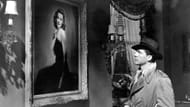
Directed by Otto Preminger, Laura is a dark, brooding portrait of a murder mystery that tells the story of Detective Mark McPherson and his investigations into the murder of the alluring advertising heiress, Laura Hunt.
As McPherson delves into Laura's life, he encounters a gallery of complex characters: the acid-tongued columnist Waldo Lydecker, who has a possessive obsession with Laura, and her charming but suspicious fiancé Shelby Carpenter.
This gives McPherson the chance to become enamored with the portrait of a woman he never met, namely through Laura’s letters, diaries, and Lydecker's memories, only to then realize that the portrayed woman never existed. Tension rises, and the whole investigation undergoes a radical shift when the plot takes a sharp twist, questioning who the true victims and murderers are.
Viewers should turn to Laura, which serves as an excellent example of both Noir films and detective dramas due to its suspense, romance, investigation, and interesting characters. The American Film Institute also named it one of the 10 best mystery films of all time.
4) Leave Her to Heaven (1945)
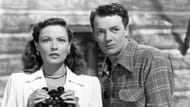
In Leave Her to Heaven, a psychological noir dripping in vibrant Technicolor, the young romantic novelist Richard Harland succumbs to the haunting beauty of Ellen Berent. Their love story takes a quick turn to marriage, but behind Ellen’s serene smile lurks a madwoman with a psychotic strain.
It transforms into jealousy, and that leads to murder, as she will do anything to make sure that she has Richard to herself and no one else. She kills Richard’s brother Danny, who is mentally disabled, and even her own unborn baby. As Ellen becomes more unhinged, her actions result in further tragedies which reveal the whole extent of her insanity to Richard.
Fans of Noir films should keep their eyes on Leave Her to Heaven for an engrossing story of passion and darkness with deep chemistry between the leads and incredibly haunting visuals of the film, which complements the twisted sentiments of love and jealousy presented in it.
5) Fallen Angel (1945)
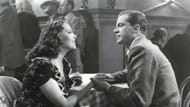
In Fallen Angel, yet another Otto Preminger directorial, the story revolves around drifter Eric Stanton, who gets marooned in a Californian town only to be entangled in a web of passion and deceit. While vicariously plotting a scheme to fast riches, Eric becomes attracted to the seductive and sensual waitress Stella with aspirations of liberating herself from the drudgery of her current lifestyle.
Eric formulates a wicked plan to get married to a wealthy girl called June and then use her money to escape with Stella. However, his plans are thwarted when Stella is found dead, and Eric stands to be the culprit.
In the process of defending himself and attempting to undo the damage of his actions, Eric undergoes a character transformation in which he is compelled to recognize the nature of his sins and the extent of the harm he has caused. Fans should view Fallen Angel for its enthralling mystery, strong characters, and moral dilemma, which precisely depicts the dark ambiance of Noir films.
6) The Big Sleep (1946)
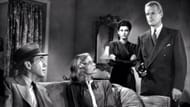
In the movie The Big Sleep, Private Detective Philip Marlowe, played by Humphrey Bogart, takes up the case of gambling debts owed by General Sternwood’s daughter Carmen (Martha Vickers). As Marlowe investigates, he meets Sternwood's second daughter, Vivian Rutledge (Lauren Bacall), a woman whose intentions are not very clear but who seems to be incredibly attractive.
The case takes a complex twist of blackmail and murder, and everything seems to become deeper with more evidence pointing to more complications. As corpses accumulate and mysteries arise, Marlowe gets dragged into the attractive yet perilous net of the Sternwood family.
Fans should see The Big Sleep for the dialogues, the chemistry between Bogart and Bacall, and the compelling plot that is characteristic of Noir films. In 1997, the film was selected for preservation in the United States National Film Registry after the Library of Congress billed it as being "culturally, historically, or aesthetically significant."
7) Nightmare Alley (1947)
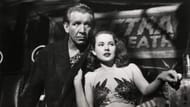
Adapted from the novel of William Lindsay Gresham, Nightmare Alley moves into the noir landscape of a carnival where a conman aims for something better. Stan Carlisle begins as a youthful mentalist and learns the real business tricks of the trade from an RV show magician, Zeena, accompanied by her husband, who is an alcoholic.
Stan’s single-minded desire for success makes him plan a fraud, which is a “spook show,” an act of emulating the presence of the deceased in front of willing rich clients. He is assisted by the cold and calculating psychiatrist Dr. Lilith Ritter, who helps him in his con jobs.
While Stan becomes entangled deeper and deeper in his fake life, the increasing anxiety consumes him, and his successful climb to leadership is accompanied by malicious descent into insanity and destruction. Fans should watch Nightmare Alley because of its realistic portrayal of themes of ambition and betrayal by the lead actor Tyrone Power, emulating the dark atmospheres of Noir films.
8) The Third Man (1949)
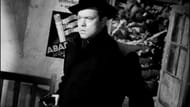
In The Third Man, Holly Martins, a pulp-fiction writer, arrives in Austria, where the Allies have divided the capital city into sectors after the War. Holly goes looking for his friend Harry Lime but learns that he has died in an inconvenient mishap.
In the course of investigating the case, Holly learns of the actual cause of Harry’s death, which includes fraud, involvement in the black market, and conspiracy. The murder of Harry and the presence of a ‘third man’ is uncovered amidst the gritty atmosphere of Vienna’s antique buildings and ominous darkness.
The Third Man is notable for its use of black-and-white expressionist cinematography, jarring lighting, and "Dutch angle" technique. With a striking score by Anton Karas and Orson Welles’s splendid presence, this film stands out as one of the greatest Noir films of all time in British cinema.
9) Sunset Boulevard (1950)
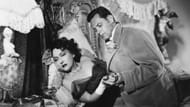
In the cult classic film Sunset Boulevard, a young, unemployed screenwriter named Joe Gillis becomes enmeshed in the world of the recently divorced silent film actress Norma Desmond. She resides in an enormous empty house that epitomizes the lost glamour of old Hollywood.
Unable to pay his debts, Joe has no choice but to cooperate in writing the screenplay; Norma has finally written for her comeback role. As her confidante, Joe becomes locked into the ever-increasing paranoia and delusions of Norma, which quickly devolves into an unhealthy co-dependency.
The protagonist is quickly drawn into her desperate world, which ends in a chilling finale that captures the fragility of fame and the destructive power of time. Fans should watch Sunset Boulevard as a commentary on the transient nature of fame in Hollywood, aided by Gloria Swanson's performance and Billy Wilder's direction.
As one of the few Black comedy Noir films, the film remains a chilling epitome of the cold and lonely path of a fading star and is now considered among the greatest movies in the history of American cinema.
10) Touch of Evil (1958)
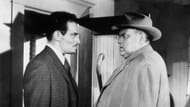
In Touch of Evil, written, directed, and stars Orson Welles, a car bomb explodes in a border town between the U.S. and Mexico, setting off a chain of intriguing events. Mexican special prosecutor Mike Vargas finds himself involved in the case and crosses paths with corrupt American police captain Hank Quinlan.
The deeper Vargas burrows in, the more he discovers Quinlan's deceitful actions and dishonest morals. The tension escalates when Vargas's new bride, Susie, becomes a pawn in Quinlan's ruthless game. Opening with an unforgettable tracking shot, the film journeys through a nightmarish, hellish descent into the darker depths of human vice and virtue.
Lauded for its technical brilliance and moody ambiance, Michael Wilmington of the Chicago Tribune wrote in his 2005 review that the classic film seemed "close to the pinnacle of film noir." Fans of Noir films must watch Touch of Evil due to its mesmerizing cinematography, Welles' towering performance, and its moral ambiguity for what instantly becomes a milestone in the history of Noir films.
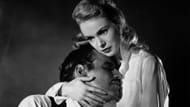
These are some classic Noir films that fans of the genre must not miss watching. From its stylized cinematography and innovative camera work to its thrilling storylines and unreliable characters, the impact of Noir films on cinema cannot be denied.
While it may not be everyone's cup of tea, this style of filmmaking will remain immortal with these classic Noir films that are bound to be an enjoyable experience for cinephiles.
Read More: Top 10 cult classic movies of all time
